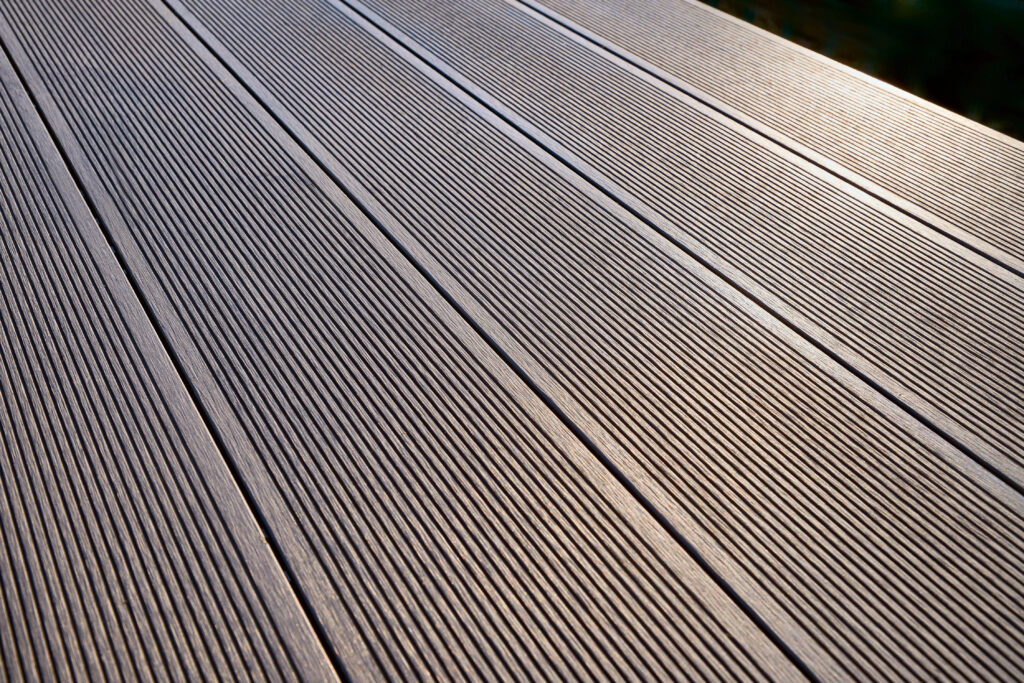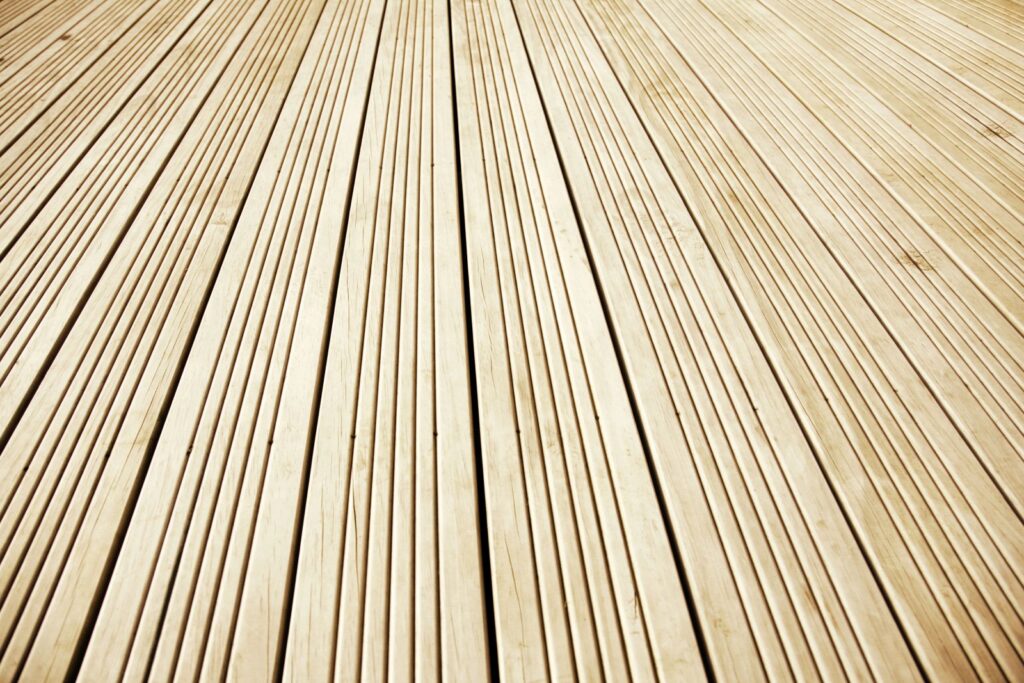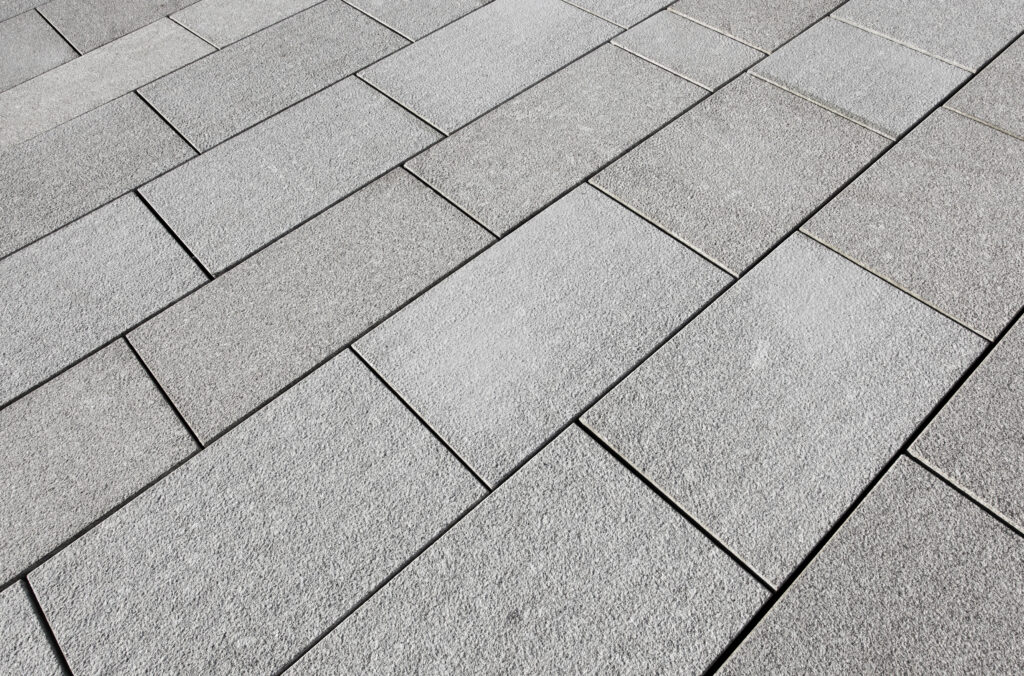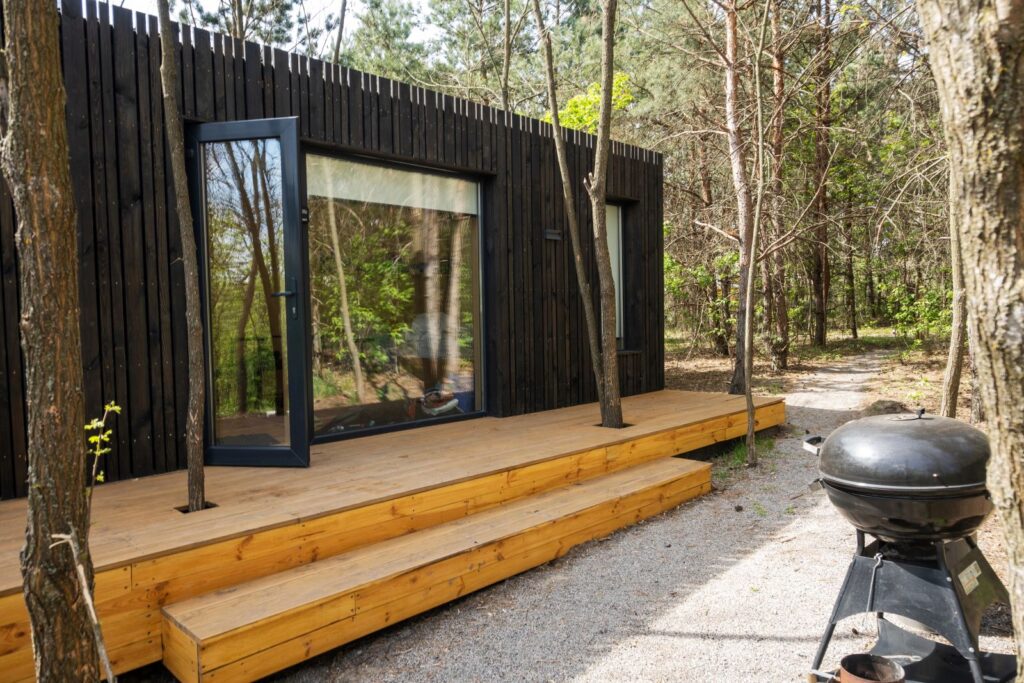Creating a seamless indoor-outdoor flow is what ties a garden room together. It makes your garden room feel like it belongs in your garden, not just plonked on the lawn. We’ve all seen those perfect garden rooms on social media and in magazines. But there’s that’s the part that often gets forgotten until the last minute: what to do with the ground right outside the door.
I’ve been looking into the options, and it really comes down to three main choices: composite decking, wooden decking, and paving slabs. I’ve put together some thoughts on each to help you decide.
Composite Decking: The Low-Hassle Choice

If you love the look of wood but don’t love the idea of yearly maintenance, composite decking is worth a look. It’s made from a mix of wood fibres and plastic, and it’s become really popular for a good reason.
The biggest win with composite is that you pretty much just install it and forget about it. It doesn’t need sanding or staining every year. A quick brush down or a hose-off is normally all it takes to keep it looking clean. It’s also really durable and doesn’t rot or get nibbled by insects like traditional wood can.
Aesthetically, it gives you that modern deck look. The colours are consistent, and you can get all sorts of shades, from light greys to rich dark browns. Some even have a textured grain that looks surprisingly like real wood.
The main thing to know is that it costs more upfront than wooden decking. But when you factor in the money and time you save on stains, sealants, and weekend labour, it can even out over the years. For a garden room where you want a clean, modern look with minimal fuss, composite is a fantastic option. It creates a smooth transition from inside to out, especially if you have bi-fold or French doors.
Wooden Decking: The Classic Feel

There’s something about real wood that just feels warm and natural. Wooden decking is the classic choice for that indoor-outdoor flow, and it can make your garden room feel like a cosy cabin retreat.
Pressure-treated softwood is the most common and affordable option to start with.
The beauty of wood is its versatility. You can paint it, stain it, or just leave it to weather to a silvery-grey colour. This means you can match it exactly to your garden room’s cladding or to your garden furniture. Building a deck also raises the area slightly, which can help define the space and make it feel more like an outdoor living area.
The trade-off is maintenance. A wooden deck needs looking after. To stop it from turning green with algae or greying unevenly, you’ll need to clean it and apply a protective stain or oil every year or two. It’s a labour of love. Over time, some boards might warp or splinter and need replacing.
If you enjoy a bit of DIY and don’t mind the upkeep, a wooden deck brings a timeless, rustic charm that’s hard to beat. It feels soft underfoot and has a natural, non-slip texture, which is great if you have kids.
Paving Slabs:Solid and Stylish indoor-outdoor flow

Paving slabs are probably the most common choice for a reason – they are solid, durable, and can create a really polished look. They create a permanent, sturdy patio area that feels like a true extension of your home.
The variety available now is huge. You’re not just limited to the concrete rectangles from the 90s. You can find slabs that look like natural stone, porcelain tiles that are incredibly smooth and sleek, or textured concrete for a more contemporary feel. You can also play with patterns – like a herringbone layout – to add real visual interest.
One of the best practical advantages of paving is that it’s fantastic for furniture. Table and chair legs sit perfectly stable on a flat, solid surface. There’s no worry about rot, and with the right base, it will last for decades with very little effort. A quick sweep and an occasional jet wash are normally all that’s needed.
The installation is the big job. Getting a perfectly level, stable base is crucial. If it’s not done right, slabs can wobble or sink over time. Because of this, it’s often a job best left to professionals, which can add to the cost. But once it’s down, you have a virtually maintenance-free area that really grounds your garden room and gives it a sense of permanence.
Bringing the Indoor-Outdoor flow Together

So, how do you choose? I think it comes down to what you want from the space.
If you want a modern, low-maintenance area that’s ready for entertaining, composite decking or sleek porcelain paving could be your best bet.
If you’re going for a cozy, natural look and don’t mind putting in a weekend of work each year, then wooden decking will give you that warm, traditional feel.
And if you want a solid, permanent, and versatile patio that will stand the test of time with hardly any upkeep, then paving slabs are the reliable and stylish choice.
Don’t forget the little things either. Adding some potted plants around the edges of your deck or patio softens the look. Outdoor rugs can define a seating area and add a splash of colour. And some soft, warm lighting – like solar-powered lanterns or festoon lights – will make the space magical in the evenings.
In the end, the best choice is the one that fits your life and how you plan to use your new garden room. Getting the foundation right means you’ll have a space you can enjoy for years to come.

